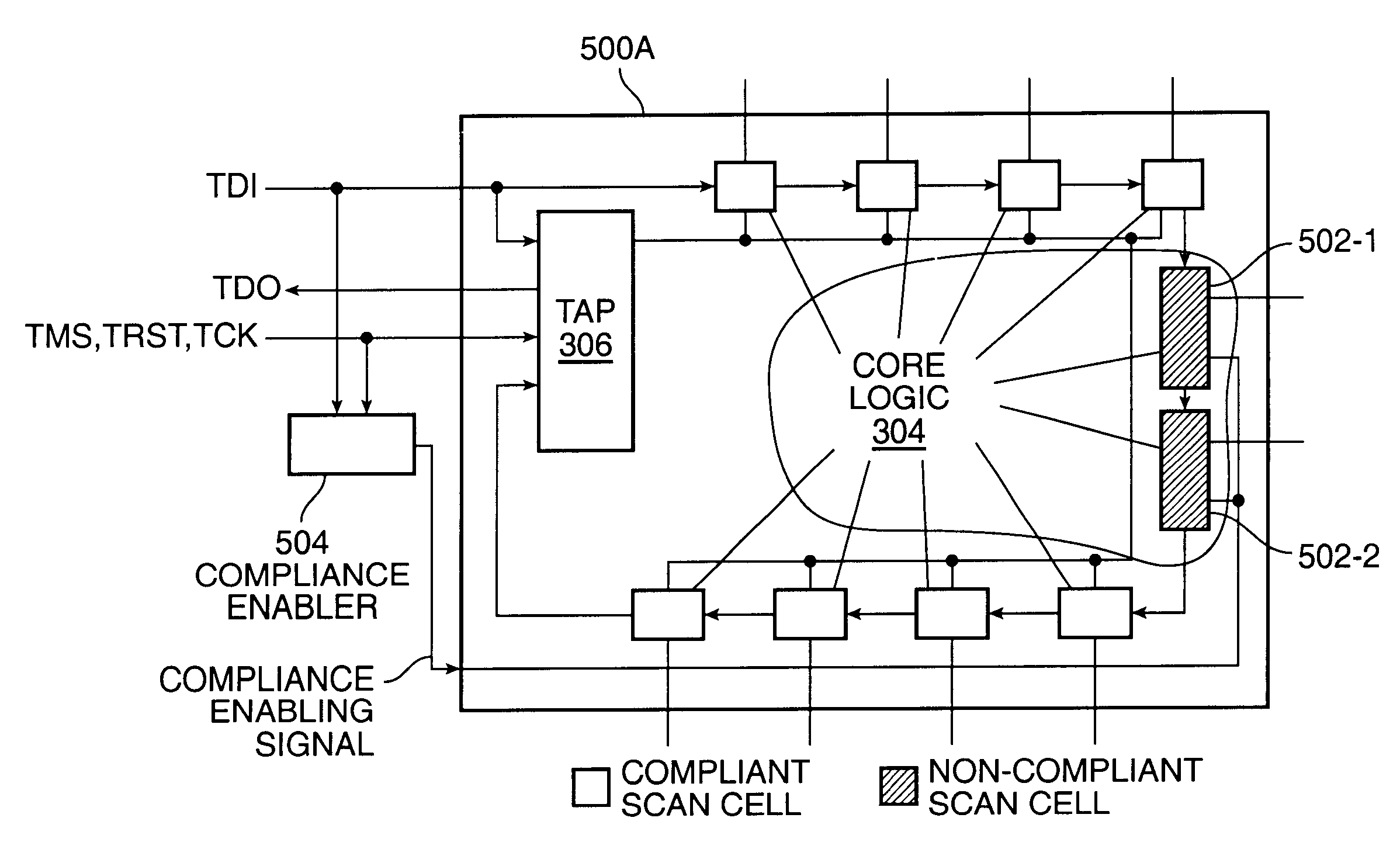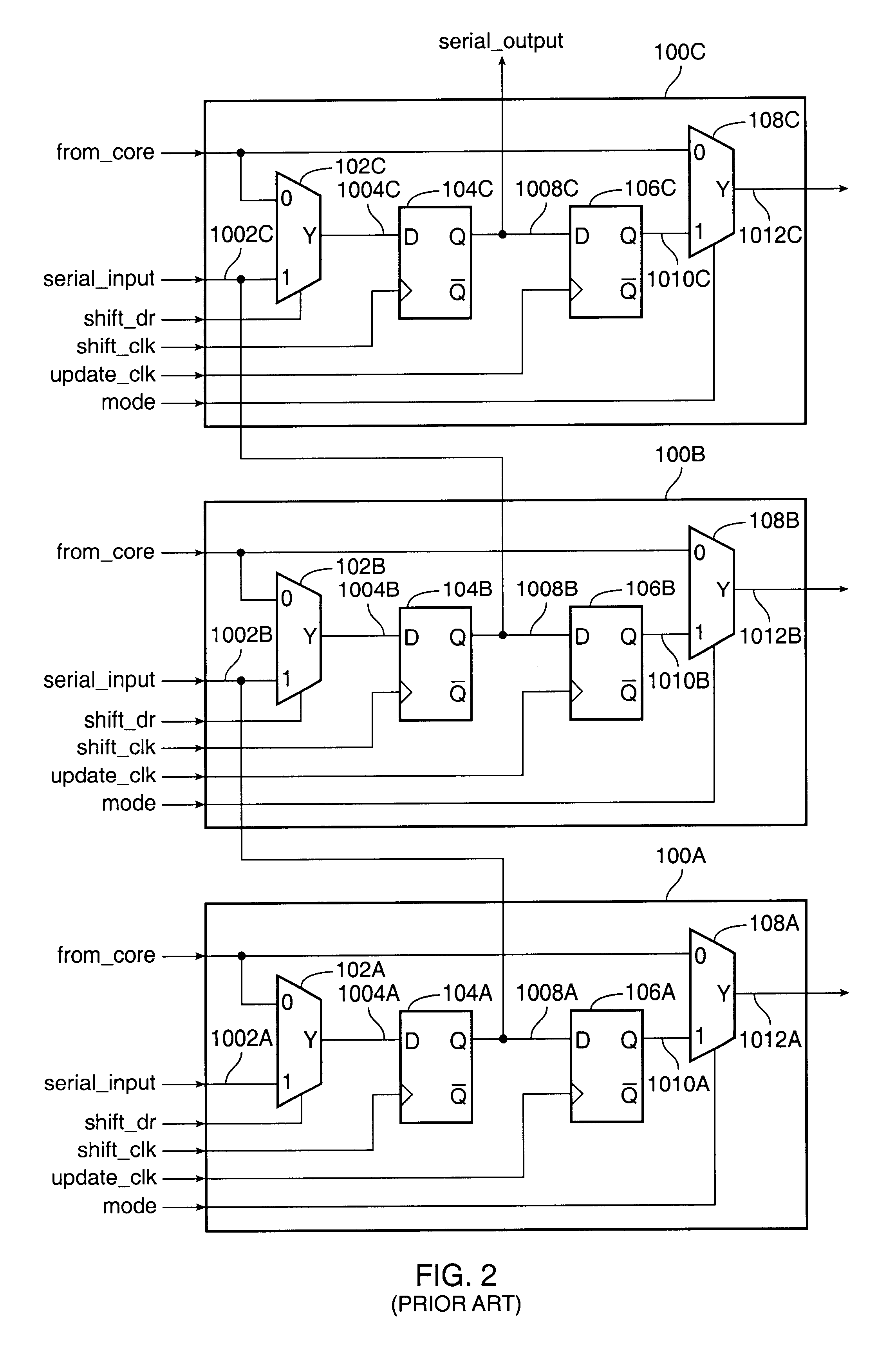Mechanism for enabling compliance with the IEEE standard 1149.1 for boundary-scan designs and tests
a boundary scan and design technology, applied in the field of integrated circuit testing (ics), can solve the problems of insufficient access to the desired hard macros, insufficient time for hard macros, and inability to achieve the desired propagation delay in the functional signal path
- Summary
- Abstract
- Description
- Claims
- Application Information
AI Technical Summary
Problems solved by technology
Method used
Image
Examples
Embodiment Construction
The present invention, in a first preferred embodiment, allows designing components with a non-compliant embedded boundary-scan cell structure while meeting all requirements of the IEEE standard 1149.1. In a second preferred embodiment the invention allows testing of devices that, due to size limitations for example, do not include an IEEE standard 1149.1 TAP controller. The invention thus enables test engineers to generate test vectors using existing both hardware and software tools that comply with the IEEE standard 1149.1. The invention also minimizes signal delay and gate overhead, permits meeting ASIC manufacturing test requirements, and improves IC testability, ASIC performance, ICT development time, and tester correlation and program reliability. LSSD- based scan cells can also use the invention.
FIG. 5A illustrates the invention in a first preferred embodiment as chip 500A, which is similar to FIG. 3 prior art chip 300 except that chip 500A includes two non-compliant scan cel...
PUM
 Login to View More
Login to View More Abstract
Description
Claims
Application Information
 Login to View More
Login to View More - R&D
- Intellectual Property
- Life Sciences
- Materials
- Tech Scout
- Unparalleled Data Quality
- Higher Quality Content
- 60% Fewer Hallucinations
Browse by: Latest US Patents, China's latest patents, Technical Efficacy Thesaurus, Application Domain, Technology Topic, Popular Technical Reports.
© 2025 PatSnap. All rights reserved.Legal|Privacy policy|Modern Slavery Act Transparency Statement|Sitemap|About US| Contact US: help@patsnap.com



